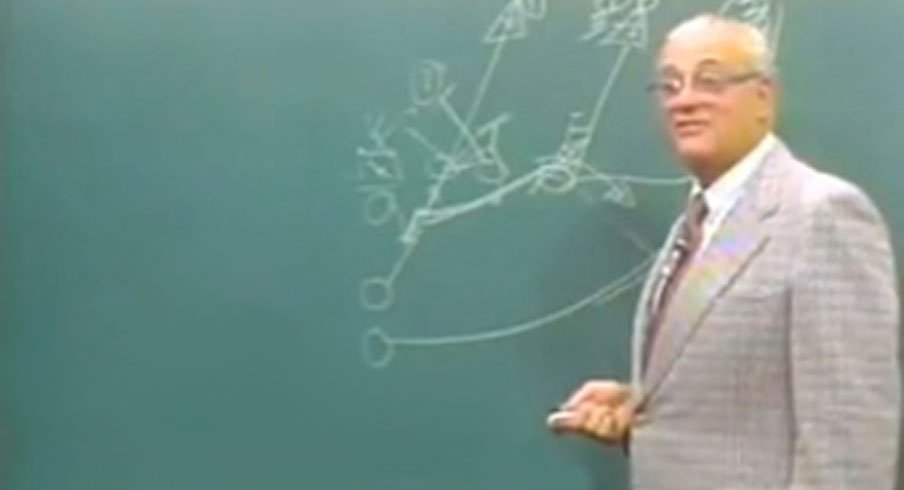There was no bigger story surrounding the First Round of the NFL Draft then speculating about the landing place of Johnny Manziel.
When the Cleveland Browns selected Manziel with the 22nd pick, the focus quickly turned to the interaction of Manziel's celebrity status with the Browns' hapless recent quarterback history. In fact, Manziel is preceded by two other quarterbacks the Browns drafted at 22 – Brady Quinn and Brandon Weedon – who were unable to live up to the hopes placed upon their shoulders.
So the focus is now whether Manziel can succeed in Cleveland where others failed. The answer to that question is likely as much dependent upon offensive coordinator Kyle Shanahan as Manziel himself. Because Manziel's pro success is tied, in part, to the staying power of spread concepts in the NFL and the Browns' willingness to deploy such looks.
Air raid for the Mobile QB
Manziel's Texas A&M Coach Kevin Sumlin is an Air Raid practitioner, the pass-first offense developed by Hal Mumme and Mike Leach. Sumlin's roots actually go back to the one-back, pass first offense, reflecting his time with former Purdue Head Coach Joe Tiller.
Reflecting this inclusion of diverse ideas, as the Air Raid coaching tree has grown so has the variety of Air Raid offenses. The trend amongst Airraid coaches – including Sumlin – is paring down Leach's passing concepts in lieu of tempo and packaged run/pass plays with zone read elements.
The latter concept provides the quarterback a run/pass option after the snap. One favorite concept is combining zone read with a stick concept. The offensive line and halfback run inside zone. The backside wide receiver runs a quick stick pass concept, heading six yards downfield and quickly breaking away from whatever side the defense is favoring. The quarterback reads the backside defensive end and linebacker, determining whether to give on the inside zone, pull and keep, or throw the stick route. This puts the linebacker in a bind. If he stays with the stick route, the running back has large cutback lanes. But if he plays the run he vacates the stick route.
Spaced out receivers and quick hitting run pass options with the quarterback as a threat to run the football take the sport back to its backyard roots. Such a system may sound simple, but it requires a quarterback to be an athlete and quickly make sound decisions.
It should thus be no surprise that Manziel is the prototypical player for this scheme. Manziel is not the fastest of the spread quarterbacks, but he has enough speed to threaten the defense when they do not account for the quarterback, and his quickness makes him a dangerous runner.
But the key element for the shotgun-spread is quick decision-making. Nearly every play requires the quarterback to decide within seconds whether to hand off, keep, or throw. That is why Chip Kelly has stated that his primary concern is not finding a quarterback that can run, but one that can quickly make the correct decision. And he demonstrated it with the Eagles this past season. Nick Foles does not threaten the defense with his legs, but was able to make sound decisions to quickly get the ball into the horizontal and vertical planes where the defense was weakest.
Perhaps no one makes such quick run/pass decisions better than Manziel. Manziel’s best trait is his innate ability to know when to scramble, both to create time to throw and to run for yards. Many quarterbacks that are good athletes do not know when to throw and when to run. Manziel has no such hesitation. The moment underneath defenders vacates the middle of the field he is prepared to take the easy yards the defense is providing. But he also uses his athletic ability to buy time, keeping his eyes downfield the entire time to hit open receivers.
Can't Fit a Square Peg in a Round Hole
But while Manziel may be the ideal fit for the modern spread offense, it is difficult to imagine him in a prototypical NFL offense. At a shade under six feet tall, it likely suits neither him nor his team to have him take seven steps drops from under center.
Enter Shanahan and his time with Robert Griffin III as a rookie. This experience provides a template into how to transition Manziel to the NFL.
One favorite of Shanahan with Griffin was operating from the pistol. The Redskins would run the zone read with a slice block from a front side H-back. While commentators focused on the zone read's use, the more important aspect for the Redskins was how it set up the play-action pass.
If a defense brought safeties to account for the quarterback as a run threat, the middle of the field was opened for play-action post routes. This was aided by the play-action fake, which was particularly effective since the mesh point on run plays is a read. To paraphrase the great Homer Smith, the most effective thing an offense can do is faking, and there is no better faking than option because the decision to give or keep is not pre-determined.
The result is that these plays not only took advantage of a defense's aggressiveness, but also gave a young quarterback like RGIII (and Manziel) a simple middle of the field 2 on 1 read behind vacating linebackers and safeties.
Of course, what began as so much promise between Shanahan's and RGIII ended with RGIII's season ending ACL tear. Shanahan must continue to tinker to mesh pro and spread concepts that take advantage of Manziel's quick decision making and improvisational skills, while limiting his actual carries.


